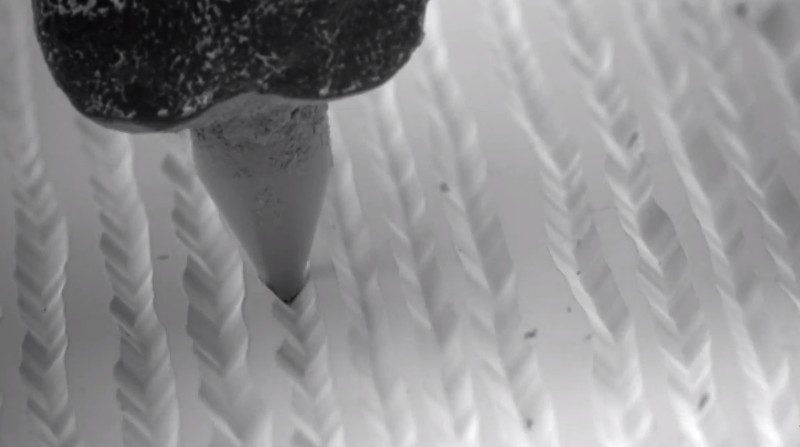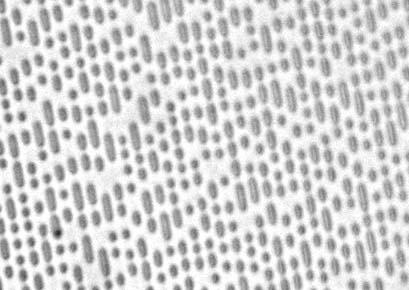The DU Lounge
Related: Culture Forums, Support ForumsCan any Lounge smart asses 'splain me why CDs are cleaned straight out-diameter instead
of like vinyl records round and round? I can see the circular tracts (tracks?) on the CDs. Also, I've followed the secrets: cheese cloth or whatchacallit surgical fiber stuff.
sir pball
(4,743 posts)The error correction that CD players use can handle a scratch that's perpendicular to a track, so it only damages a tiny section, much more easily than a circular scratch that takes out a lot more of the track. Think of vinyl, a little nick in a track just makes a pop, but a scratch more in line with the groove can derail the needle.
UTUSN
(70,710 posts)sir pball
(4,743 posts)..can confuse the laser that reads the CD and send it off the audio track, much like a scratch at a shallow angle to the grooves can make vinyl skip.
A perpendicular scratch will just knock out a small section of the track, which has enough redundancy built-in so a little dropout is not a proble.
cantbeserious
(13,039 posts)Read by the laser.
UTUSN
(70,710 posts)here).
cantbeserious
(13,039 posts)Playback problems.
Glassunion
(10,201 posts)vinyl is grooves, like little trenches that can collect dust. CDs are smooth roads. If you wipe out a trench, you basically clean it. If you wipe out a road, you put a long broken line that runs the length of it.
UTUSN
(70,710 posts)But your reply moved things forward. Let's see another step.
Glassunion
(10,201 posts)If you sweep side to side most of the dash remains, but if you scrub in the direction of the lines, you can wipe them all out.
UTUSN
(70,710 posts)Glassunion
(10,201 posts)If you clean along the trench of the vinyl, you clean the crap out of the trench. Here is a photo of a needle in one of those trenches.

Now on a CD, you have dots and dashes. If you scratch it sideways, more of the dots and dashes are left, but if you clean with the dots and dashes, you can screw up the line making it unreadable.

UTUSN
(70,710 posts)your time with me.
Glassunion
(10,201 posts)Those dot's and dashes are simply the binary code that is decoded into audible sound. It is very similar to the grooves in a vinyl record. A laser shines on those dots and dashes which is then reflected back up to a receiver where it is decoded. The laser is roughly the equivalent of the needle.
The tracks on a CD (similar to the grooves on a vinyl), start in the center and spiral outward towards the edge (unlike a vinyl). A single track is only about .5 microns (1/2 of 1 millionth of a meter) wide. So they are quite thin. If you took this track and laid it out straight it would be about 3 1/2 miles long.
But let's keep it simple. Suppose you had a really tiny needle riding along one of those tracks. Now there is nothing holding it in that track since it is not in a groove. The needle will simply need to keep focus of where it is as it moves along the track. Now if you have a little scratch that crosses perpendicular to the track, it will be like a little speed bump that it has top hop over. It still knows where it is, and will continue riding along that track. However, if you have a little scratch that rides parallel over that track, the needle will lose it's place and skip around looking to get back on track.
This is a magnified scratch on a CD that I highlighted in red. This scratch is mostly parallel to the directions that the track is heading in. As you can see, the scratch completely screws up about 10 to 11 passes of the track. This would be the equivalent to cleaning the cd in a circular pattern and leaving a scratch behind. That scratch is really tiny (only about 1/2 the width of a human hair), yet you can see how devastating it is to the tracks, and how it would make the "needle" skip around looking to get back on track.

UTUSN
(70,710 posts)your talent for putting things in terms somebody like me can (almost) understand!1 I am totally sincere, NOT being sarcastic.
Since yesterday's declaration that you were wasting your time with me on this, I wanted to ask why you said that by cleaning in straight lines out from the center to the edge, NOT SO MANY dots and dashes are lost ---- does that mean that the cleaning IS erasing some no matter what? But I didn't post because I thought I had run you off.
Allow me to regurgitate it in my words so that you can check how close or not I am: So the spiral on vinyl is one long groove/trench, which *IS* cleaned by going with the grain/following the groove, and it starts at the outside and goes in.
Whereas the (whatever they are, dots/dashes) have spaces in between, such that (O.K., I'm getting lost here)... a circular/spiral scratch (wouldn't it be a STRAIGHT LINE?) would knock the reader/laser out of the sequence (no groove/trench).
Still in Lost territory here: What's throwing me off is that the CD tracks appear (to me) to be circular/spiral (inward going outward?), so when we are cleaning in a straight line outward, are we "escaping through some of the spaces between the dots/dashes?
Well, this is about as close as I'm going to get with this. I'll understand if replying is too much hassle. THANK you, really, VERY much!1
petronius
(26,602 posts)arranged in a spiral. If you erase (scratch away) a segment perpendicular to the direction of reading (i.e. across the spiral) you only lose maybe a letter or so and it's pretty easy to get the meaning. But if you erase (scratch away) a segment parallel to the direction of reading you lose whole sentences - much harder to recover from. ![]()
I'm glad you asked, I didn't know the answer either. ![]() to Glassunion et al. for the helpful answers!
to Glassunion et al. for the helpful answers!
![]()
Glassunion
(10,201 posts)But absolutely perfect.
I wish we could rec individual posts.
Glassunion
(10,201 posts)"does that mean that the cleaning IS erasing some no matter what?" in a manner of speaking, this is correct.
"so when we are cleaning in a straight line outward, are we "escaping through some of the spaces between the dots/dashes?" - Not quite but close. What is happening, when you scratch a CD in a straight line from the center out, you are still damaging the tracks, however, you are minimizing the damage. Since much less of the individual track is damaged than if you had scratched along the track. CD players and other optical devices have an ability to correct for small gaps in the dots and dashes of a track. The smaller the gap, the easier it is for the reader to correct for them.
On a side note:
When you clean a CD, you are in all probability going to put small scratches on it, however the CD player can correct for that and you'll never know the CD is scratched. Now, a scratched CD also does not necessarily mean that the data is erased. The data portion of the CD is actually under a polycarbonate layer of clear plastic inside of the CD. This acts as a protective coating above the actual data. So, if a CD becomes heavily scratched, or hazed over, it may still become readable again by polishing the top layer.
MADem
(135,425 posts)pinboy3niner
(53,339 posts)
UTUSN
(70,710 posts)UTUSN
(70,710 posts)mouth breather!!1
pinboy3niner
(53,339 posts)As you know, I am no stranger to extensive dental work after my combat injury.
Initech
(100,080 posts)lame54
(35,293 posts)bluesbassman
(19,374 posts)JustABozoOnThisBus
(23,350 posts)never had a problem.
If a cd or dvd gets scratched a little, then I use some automotive polishing compound, that usually works.
Technically, I think the CDs are recorded in many circular tracks. The vinyl is only one spiral track. I'm sure this helps.
Best of luck with your quest.
UTUSN
(70,710 posts)I hadn't played music at home in about two years. The machine on an open shelf and all the 60 discs inside its little jukebox/storage space were dusty, and when I tried it, only the radio worked. Went through the usual steps -- downloading the manual, calling the 800 #. The manual said cleaning might be the answer, and the 800 # techs said a machine like this was not worth repairing, to try the cleaning. So the internet said the cleaning was center-OUT not around, which led to this thread's question. A couple of youTubes showed the way.
I'm nervous about discs and vinyl, wary of scratching them, whatever. Did the whole cheesecloth thing. Plus the videos said that WASHING with distilled water and/or a few drops of dishwashing soap was what to do. I only used the water let them air dry. Then there were some water spots besides finger smudges from the past, so I used the cheesecloth center-OUT.
So finally it was all done and ready to try them. The store bought ones seem to be O.K., but the first few of my homemade copies (from tapes and vinyl) have skipping and are going in a pile (to throw out).
I really don't want to use other chemicals like polish and paste and stuff. So I'll eventually see what's left Some of my music I don't care for anymore (Goodbye, Yellow Brick Elton, Bob DYLAN). I'm hoping my Classical and things like the 2-disc BeeGees are O.K. But it's looking like a MASSACRE of combined changed tastes and skippers. Thanks to everybody for the enlightenment.